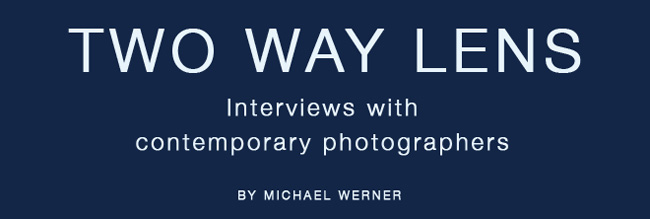MW
What inspired you to start taking photographs, and what have been some of the most important milestones in your career up until now?
FF
I've always loved pictures and I drew incessantly, often copying figures from magazine photos (I looked forward to the arrival of my family's Look magazines every week). I also made collages, combining magazine photos, torn paper and drawings.(My dad was a paper salesman, so we always had reams of paper samples on hand.)
But when I was introduced to a darkroom, I - like so many of us - fell immediately in love with the magical moment in which the image would emerge from the liquid bath, and I put away my pencils and picked up a Nikon. This 'discovery' came soon after I'd decided to pursue a graduate degree (an MFA, specializing in graphic design and photography). In fact, my 'discovery' of graphic design - the merging of fine art, commerce, image-making and communication - was an earlier milestone. When I was introduced to drawing on the computer in 1989 and to Photoshop in 1992, pre-layers, it all came together, so this was the next milestone. With this new toolkit and playground, I was now able to seamlessly composite my drawing with photographs.
MW
How do you approach editing your work, and what advice would you give to others about evaluating their photographs?
FF
As I work in a solitary fashion, I find the editing process extremely difficult. I need feedback, so I might send a jpg to a trusted friend when I'm working on an image or ask my gallery director for an opinion. I also don't print my images immediately. I look at them on my iPad or some other device, let them 'sit' for awhile, think about them, and come back to them when I'm ready. Quite often, I then alter or discard many parts of the image. As each image takes a long time to create, it takes extreme fortitude to make these changes! I should add that most of the images never see the light of day, although I might cannabalize parts of them and re-use those pieces elsewhere.
I think it's helpful to look at an image upside down and sideways and to ask these questions about each composition:
does it make sense at least to me?
does every element work together and form cohesive relationships?
does every pixel have a purpose?
does it question and surprise?
does the image make me feel something?
MW
How do you decide on new projects to work on? Do you always shoot with a concept in mind or do you wait to be inspired as you go?
FF
I shoot what interests me and I later let the images draw me into their story. The idea of 'projects' comes after I've generated some images and I then discover their connections. The process is intuitive and allows me more freedom with my image-making.
MW
What ways have you found successful for promoting your work and finding a receptive audience for it?
FF
Promoting one's fine art is so different than marketing a service, which is what I did for years as a designer. Learning to promote one's fine art is both daunting and only occasionally rewarding; it's required me to get over my shyness, my tendency towards self-effacement, my fear of self-promotion (how unladylike to promote oneself!), and it has forced me to accept rejection…it's not for the faint of heart! But I discovered that little successes lead to bigger ones - as long as the work is interesting and challenging and the craftsmanship, solid. For emerging artists, I recommend juried exhibits with respected jurors and occasional portfolio reviews. Social media is also a must, alas. But the real challenge is to avoid getting sucked into the vortex of marketing and promotion and to not lose sight of your art.
© copyright all images Fran Forman












